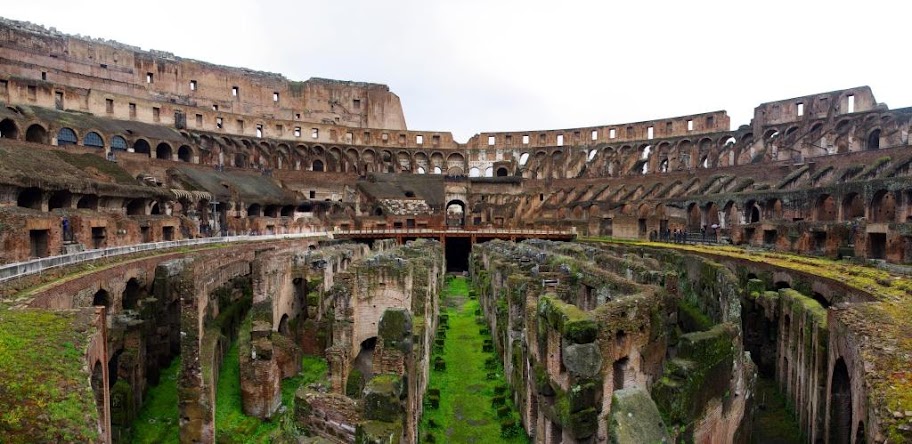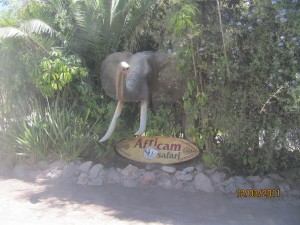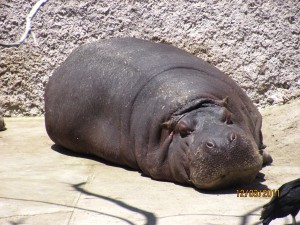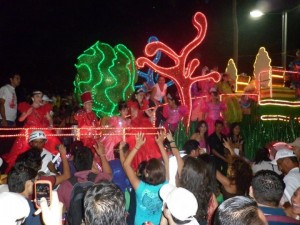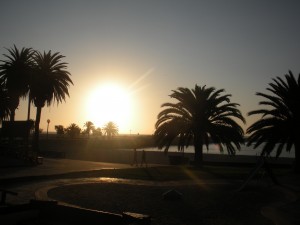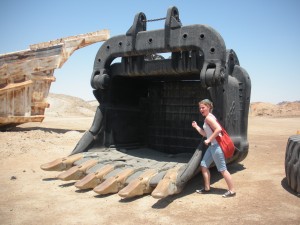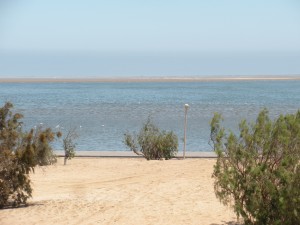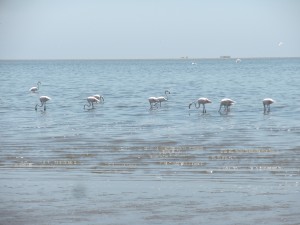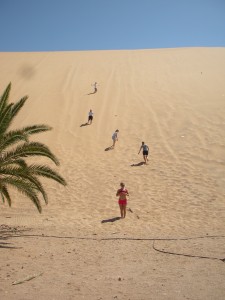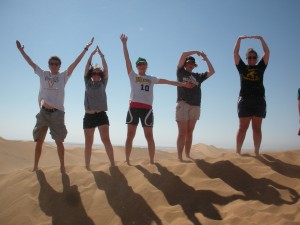If there’s one thing I’ve learned about living in France thus far, it’s to live according to what the French call “le système D” or “let’s take care of it when it happens” “don’t think about it now” and “do it later”. This life philosophy is most commonly displayed in the often used phrase “c’est pas grave” or “eh, no big deal”. I’ve heard this phrase applied to everything from spilled drinks to the postponement of a 50€ payment. Things are flexible here and rarely go according to plan. This is why there’s never a dull moment in exploring the city of Paris. I’ve been several times so far this semester and have yet to repeat an experience. As chaotic as this philosophy may sound, it always seems to work out for the best, let me describe my most recent visit to the city to illustrate this for you:
I had agreed to meet the other students I was going to the city with at 11am in the lobby of our dorm to walk to the train station. For me, this means waking up at 10:45, getting ready hurriedly, grabbing an apple and my camera and walking out the door. However, I was woken up from a phone call around 10 from a Danish friend of mine telling me she was waiting for us at the station. “No, no, no,” I said in extremely groggy morning french, “we’re meeting at 11:20 not 10:20. Little did I know this was to be the first of many miscommunications. 30 minutes later I was informed via facebook that another friend would be late meeting me. When he did finally come down he was the only one ready, so we went to roust the rest of the group. We then discovered that they decided not to go in favor of sleep in homework but made complicated plans to meet them that night in the Latin Quarter (a popular student area). Due to a lack of cell phones, Kody, the boy who was actually still going lent his phone to Jake, one who was staying so that he could call us when he got into town.
Now running 20 minutes late, we set off to meet our Danish friend, Helene, at the station. After buying tickets and getting on the train, we settled down for a 40 minute train ride, planning on arriving in the city around 12:45 or so. At this point, I realized I’d left my cell phone in the room. This meant that Jake couldn’t call us when he got to town, but remembering that we’d set a date and time to meet I shrugged my shoulders with a “c’est pas grave” leaving my mouth. Then I realized that this also meant we’d be unable to meet a Hungarian friend of mine in Paris as he was going to call me to find us. I felt bad for ditching him, but what could I do about it? “C’est pas grave” I said again and began discussing the coming activities we’d planned.
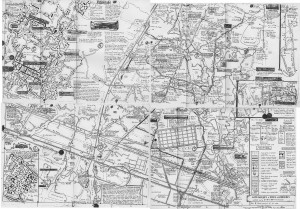
Map of the Catacombs. I'm not kidding, it's huge. This is what's underneath Paris.
Our original plan was to go to the Catacombs for the day. The tour through the catacombs is interesting of course because of the Roman catacombs underneath the city, but also because the entire city of Paris lies on hollow ground. Two centuries ago, there were several occurences of entire sections of the city collapsing into the area left empty by the Romans. An architect was hired to go through and entirely restructure subterranean Paris. Now, underneath the wide, expansive, tree-lined boulevard lies a veritable mirror of the city streets lined by rock arches supporting the city above. Some of this can be seen on the tour of the catacombs, but most of it is blocked off. There’ve been several people that have illegally gone down to explore, but I can’t even begin to imagine how they’d find their way out. Needless to say, we were excited to see all of this. Apparently, so was everyone else in the city of Paris that day. The line stretched down the block and around the corner. So we decided, rather than spending the beautiful spring-like day waiting in line, we’d walk to the nearby Montparnasse Cemetery where several famous people were buried.
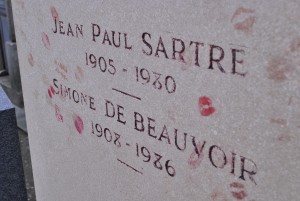
Sartre and Beauvoir's grave in the Montparnasse cemetery.
After this excursion, we thought we’d check out the line at the catacombs again, but accidentally turned the wrong way down the street. “C’est pas grave!” We continued down the street where we found le jardin Atlantique and a museum called Mémorial Leclerc-Musée Jean Moulin dedicated to the Liberation of Paris during WWII.
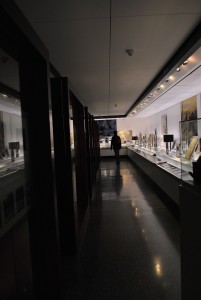
Kody perusin' the Mémorial Leclerc-Musée Jean Moulin
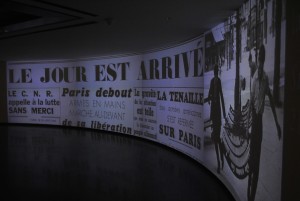
Film display in the Paris Liberation exhibit
Once we’d thoroughly perused this (free!) museum we thought it might be time to head to a different part of town. So, we jumped on the metro and headed towards another lovely garden area of Paris, Le jardin Luxembourg. However, I realized on the way there that we’d be passing the oldest church in Paris on the metro and begged my traveling buddies to get off with me a stop early so I could see this. They agreed, on the condition that they could get something to eat first. So we stopped at a crepe stand, listened to a street band while we ate, and headed into this 1500 year old church.
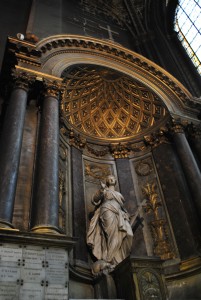
St. Germain
Afterwards, we thought we’d better meander to the spot where we were meeting Jake, and maybe stop to get a coffee along the way. Meandering along back roads to see a bit more than just tourist sites, we took our time stopping to take photos, or browsing through stores. Eventually, we walked past Saint Sévrin, another decently old church along our route. I tried to resist the urge to go in, but I just couldn’t do it. I was extremely glad I hadn’t kept walking when I realized there was a choral performance starting in just 5 minutes! I convinced my friends to stay for the concert and prepared myself for a lovely hour or so of beautiful music. Of course, in my expectations I’d forgotten that the French operate differently. The concert began with an hour long lecture about the history of the church. Kody is just beginning to learn french, and though he can follow some conversations, a lecture in an echoing church isn’t the easiest thing to comprehend. So, he napped until the music started while Helene and I tried to follow the man’s somewhat erratic history of the architectural and theological progression of Saint Sévrin. This became a bit tiring after awhile, but it was all worth it when the music started. The program was in French and Latin and I can’t explain to you how much I geeked out at the prospect of translating one foreign language by way of another.
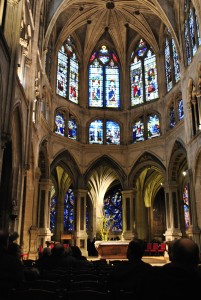
My pre-concert view of Saint Sévrin
By the time the concert ended we had just enough time to see the ruins of the Roman baths at the museum of the Middle ages, and walk by the Sorbonne in the Latin Quarter before we had to meet our friend. This is when more complications occurred. The plan from here was to meet Jake, and our other friend, Berta, grab some dinner, and go to a jazz club for a few hours. However, Berta had yet to get a hold of us, she’d planned on going into Paris with Helene who didn’t get the chance to communicate the fact that she was coming with us. Berta couldn’t answer Helene’s calls due to the fact that Helene was using her Danish number and Helene kept missing Berta’s calls. Add to all this confusion the fact that Berta speaks only spanish fluently and has difficulty understanding french when it’s spoken in a noisy metro station and you have one heck of a jumbled mess. We tried to explain to her we weren’t sure if Jake was even coming, and if he didn’t, it might not be worth her coming into the city at all because we only wanted to stay til 1 am or so and she wouldn’t get there til 9:30 or 10. We did manage to find Jake, but by the time we found him and tried to tell Berta what was going on, we were all so confused that she decided it’d be easier just to stay in Cergy. “C’est past grave” we’ll do it another time.
Then we decided to walk up and down a few streets until we found a french bistro reasonably priced enough to eat at, not an easy feat in Paris. Eventually we were successful and sat down to a fantastic french meal. The way dining works here, you usually order a formule, or a combination of an entree, a main course, and a dessert for a set price. We all decided to do this, ordered a bottle of Côtes du Rhone for the table and feasted our eyes on all the mouth-watering prospects listed on the menu. After some brief translations for Kody and Jake, we all decided and placed our orders. Our entrées arrived and we couldn’t believe what we were seeing. Jake got the ever classic soupe à l’oignon or French onion soup, Helene got mignonettes du saumon, or small salmon filets, and Kody and I both got escargots. Don’t wrinkle your nose, these little guys are delicious. They have the consistency of thick shrimp and were just drenched in a garlic pesto and butter sauce. After some entertaining maneuvering involving a kind of clamp, and a mini fork to extract them from their shells, we feasted on this little french delicacy. Let me tell you, I’d never tasted something so wonderful, until the next course that is. I ordered Salmon, which was, of course, drenched in butter and absolutely miraculous. Jake and Helene both got duck leg, which was like an extremely tasty, over-sized chicken leg, but Kody won the award for most delectable dish. He got a peppercorn duck breast. He was nice enough to let me sample some, and I promise you, I’ve never tasted something so incredible. Dessert was of course, fantastic. Fondant au chocolat (it’s like a brownie with a center that just oozes fudge), and crème brulée were Helene and Jake’s choices, while Kody and I each ordered something called Paris Brest. This little piece of heaven is a kind of almond praline pastry with the consistency of a soft scone, it’s shaped like a donut and sliced in half like a sandwich. The center is filled with a praline cream that tastes more like coffee than anything, and then entire thing is topped with caramely maple sauce and just a dusting of sugar. If you can, find one of these. If you can’t, I highly encourage you to try to make your own. I looked up recipes as soon as I got back, this one looks pretty great.
French dining is an activity, not a preface or an afterthought to a main event in the evening. Restaurants are open late, and oftentimes waiters and restaurant owners will encourage you to stay and talk. Once we had to ask for the bill 3 times before they were finally convinced that we were finished with our conversation and our meal and were ready to leave. This meal could be considered somewhat quick though it was at least a 2 hour affair. Afterwards, we took our delightfully full selves to the metro, deciding to skip the jazz club in hopes of getting back to Cergy before 1am. Despite getting separated into two separate train cars (“c’est pas grave”) on the way home the rest of the night was relatively uneventful. Jake and I had a lovely conversation with a french woman before she got off at her stop. I was thoroughly surprised we didn’t run into any issues with transportation out of the city. There’ve been several occasions when I’ve had to jump through quite a few hoops, only to realize that I could have just done something else instead, but “c’est pas grave”.
So there you have it, a day in Paris according to le système D. There were issues along the way, but I must say all things considered it was pretty successful.

